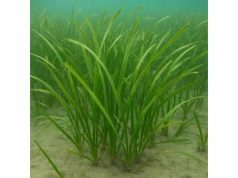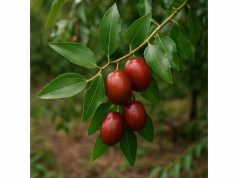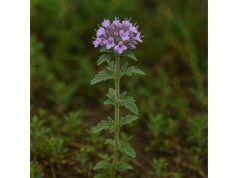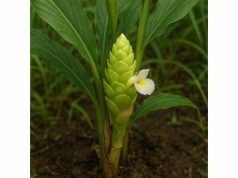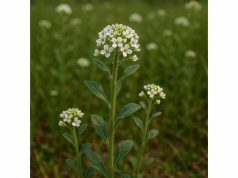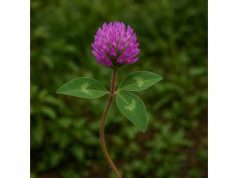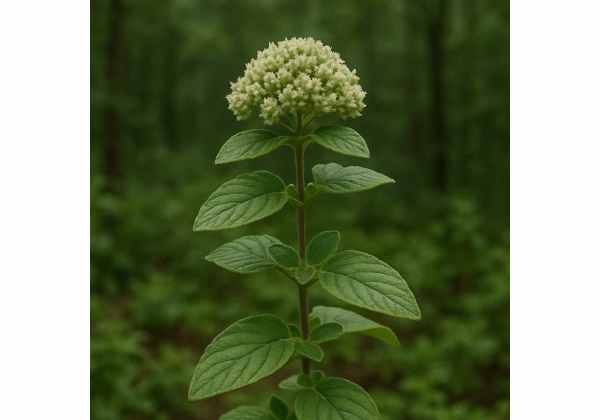
Za’atar is a fragrant Middle Eastern blend of wild oregano-like herbs, sesame seeds, sumac, and aromatic spices prized both for its distinctive taste and potent health benefits. Rich in antimicrobial phenols, anti-inflammatory flavonoids, and antioxidant essential oils—such as thymol, carvacrol, and rosmarinic acid—Za’atar supports immune function, eases digestion, and combats oxidative stress. Historically valued in folk medicine and daily cuisine, it soothes respiratory discomfort, enhances cognitive clarity, and promotes skin healing. From a drizzle over warm flatbreads or a comforting herbal tea to salves and infused oils, Za’atar’s versatile culinary uses and medicinal properties make it an indispensable staple of holistic well-being worldwide.
Table of Contents
- Botanical Overview and Habitat Insights
- Chemical Constituents Analysis
- Health Advantages and Core Attributes
- Applications and Precautions
- Research Insights and Key Findings
- FAQ
Botanical Overview and Habitat Insights
Za’atar most commonly refers both to the wild herb Origanum syriacum and to the spice blend derived from it. Belonging to the mint family (Lamiaceae), O. syriacum is a hardy perennial featuring small, oval, gray-green leaves covered in fine hairs that trap moisture. Its diminutive lavender blossoms appear atop square stems during late spring and early summer, exuding a gentle, honeyed scent that intensifies as the plant approaches full bloom.
Taxonomically, O. syriacum falls within the genus Origanum, sharing lineage with oregano, marjoram, and other aromatic herbs common in Mediterranean climates. Unlike its culinary cousins, it thrives in rocky, calcareous soils where drainage is swift and rainfall minimal. Native to the hilltops and plateaus of Syria, Lebanon, Palestine, and parts of Jordan, the plant’s resilience to drought and sun makes it ideal for xeriscaping and rock gardens. In its wild habitat, Za’atar forms low mats or small clumps, often colonizing crevices where little else can grow.
Cultivation for culinary and medicinal purposes involves propagating through stem cuttings or dividing mature clumps. Growers prefer alkaline substrates enriched with compost to boost leaf oil concentrations. Full sun exposure is critical; partial shade can diminish essential oil yield and flavor. Harvesting just before peak flowering ensures maximum potency, as the concentration of thymol and carvacrol—key antimicrobial constituents—reaches its zenith. Post-harvest, leaves are dried in shaded, well-ventilated areas to preserve volatile oils, then gently crushed or ground, often combined with toasted sesame seeds, tangy sumac, and salt to yield the characteristic Za’atar blend.
Ecologically, O. syriacum supports pollinators such as bees and butterflies, offering nectar-rich flowers that sustain insect populations in arid regions. Its deep root system stabilizes shallow soils, preventing erosion on steep terrains. Gardeners value its low maintenance, deer resistance, and ornamental appeal, while foragers prize wild harvests for authentic flavor. Whether in the wild or cultivated beds, Za’atar’s botanical traits and environmental adaptability underscore its enduring presence in Mediterranean landscapes.
Chemical Constituents Analysis
Below is a numbered examination of Za’atar’s principal active compounds, each underpinning its traditional and modern therapeutic uses:
- Thymol
- A monoterpene phenol renowned for potent antimicrobial properties. Thymol disrupts bacterial cell membranes, effectively targeting pathogens such as E. coli and Staphylococcus aureus. It also functions as a free-radical scavenger, reducing oxidative damage to tissues.
- Carvacrol
- Closely related to thymol, carvacrol demonstrates strong antibacterial, antifungal, and antiviral actions. It modulates the gut microbiota, promoting beneficial strains while inhibiting harmful ones, and exhibits anti-inflammatory effects by suppressing pro-inflammatory cytokines like IL-1β and TNF-α.
- Rosmarinic Acid
- A potent polyphenol common in Lamiaceae herbs, rosmarinic acid offers antioxidant, anti-allergic, and neuroprotective benefits. By inhibiting lipoxygenase and cyclooxygenase enzymes, it reduces histamine release and eases symptoms of allergies and airway inflammation.
- Flavonoids (Apigenin, Luteolin, Quercetin)
- Plant pigments with multifaceted roles: apigenin provides mild anxiolytic effects, luteolin contributes to anti-inflammatory action, and quercetin supports cardiovascular health through vasodilation and platelet stabilization. Together, they bolster antioxidant defenses and modulate immune responses.
- Thujone (Trace Levels)
- Present in minute amounts, thujone adds a subtle minty bitterness and has mild neurostimulant effects. While high doses pose risks, culinary Za’atar delivers safe amounts that enhance flavor without toxicity concerns.
- Essential Oils (p-Cymene, γ-Terpinene)
- Volatile monoterpenes that impart characteristic aroma and spasmolytic (antispasmodic) properties. When used in steam inhalations, they facilitate mucus clearance and ease bronchial spasms.
- Sesamin and Sesamol
- Lignans from toasted sesame seeds in the blend, functioning as powerful antioxidants. They promote healthy lipid profiles by reducing LDL oxidation and support neuroprotection by quenching free radicals in neural tissue.
- Mucilage and Fiber
- Though present in smaller quantities, the mucilaginous polysaccharides in dried Za’atar aid digestive health by soothing gut linings and fostering regularity.
The interplay of these compounds results in synergistic effects: antimicrobial action enhanced by anti-inflammatory and antioxidant mechanisms, making Za’atar both a flavorful condiment and a potent natural remedy.
Health Advantages and Core Attributes
Za’atar’s diverse phytochemical spectrum translates into a broad array of health benefits:
- Immune Enhancement:
Thymol and carvacrol inhibit pathogenic microbes, reducing infection risk and supporting white blood cell activity. Regular dietary inclusion may lower incidence of common colds and gastrointestinal infections. - Antioxidant Defense:
Rosmarinic acid, flavonoids, and sesame lignans neutralize free radicals, protecting cellular DNA and lipids. This defense mechanism helps prevent chronic diseases linked to oxidative stress, such as cardiovascular disorders and neurodegeneration. - Anti-Inflammatory Effects:
By blocking COX-2 and lipoxygenase pathways, Za’atar alleviates inflammation in joints, muscles, and the digestive tract. Anecdotal reports highlight relief from arthritic stiffness and muscle soreness following topical or oral use. - Digestive Support:
Essential oils stimulate bile and gastric secretions, improving nutrient assimilation. Mucilage soothes gastrointestinal mucosa, offering relief from gastritis, heartburn, and colic. - Respiratory Relief:
Steam inhalations or tea infusions ease congestion, reduce coughing frequency, and relax bronchial muscles. From ancient households to modern herbalists, Za’atar tea remains a trusted remedy for mild respiratory ailments. - Cognitive and Mood Uplift:
Apigenin exhibits anxiolytic properties without sedation, promoting calm focus. Carvacrol supports acetylcholine pathways involved in learning and memory, potentially shielding against age-related cognitive decline. - Cardiovascular Wellness:
Sesame lignans and quercetin contribute to healthy cholesterol metabolism, lowering LDL and supporting arterial flexibility. Vasodilatory terpenes enhance blood flow, promoting optimal circulation. - Skin and Wound Care:
Applied topically as poultices or salves, Za’atar’s antimicrobial and anti-inflammatory actions cleanse minor cuts, reduce swelling, and accelerate healing.
Real-world Tip: Integrate a teaspoon into your morning vinaigrette or yogurt bowl to effortlessly boost both flavor and wellness. Daily use supports gut balance, antioxidant status, and overall vitality.
Applications and Precautions
Za’atar’s versatility shines across culinary, medicinal, and cosmetic domains. Below are its primary applications and essential safety guidelines:
Culinary Uses
- Traditional Manakish: Combine 2 tablespoons of Za’atar with 3 tablespoons of extra-virgin olive oil. Spread on flatbread or pizza dough and bake at 200 °C for 8–10 minutes.
- Seasoning Roast Veggies & Proteins: Rub 1–2 teaspoons on chicken, fish, or vegetables before roasting or grilling to infuse herbal depth and tenderize fibers.
- Dressing & Dip: Stir Za’atar into yogurt, hummus, or oil-based dressings for salads, grain bowls, or mezze platters.
Herbal Preparations
- Tea Infusion: Pour 250 ml of boiling water over 1 teaspoon of Za’atar. Steep covered for 7 minutes. Sip warm, up to three times daily, to soothe indigestion and clear sinuses.
- Steam Inhalation: Add 2 tablespoons to a bowl of hot water. Drape a towel over head and inhale vapors for five minutes to ease congestion.
- Topical Poultice: Infuse 2 tablespoons of Za’atar in 100 ml warmed carrier oil for 24 hours. Strain and apply to minor wounds or inflamed areas twice daily.
Cosmetic & Aromatherapy
- Facial Steam: Enhance skin circulation by inhaling steam from a Za’atar-infused water bath, clearing pores and promoting glow.
- Massage Oil: Blend Za’atar-infused oil with a few drops of lavender for a relaxing, anti-inflammatory massage.
Dosage & Safety
- Culinary Dose: ½–1 teaspoon daily is generally safe.
- Therapeutic Tea: Do not exceed 3 cups per day. Overuse may cause mild stomach cramps or nausea.
- Precautions: Thujone content warrants caution in pregnant or breastfeeding women; consult a healthcare professional before medicinal use. Individuals on anticoagulants should monitor for additive blood-thinning effects. People with pollen or Lamiaceae allergies may experience mild reactions.
By following these guidelines, you can harness Za’atar’s benefits safely and effectively, whether in the kitchen or the medicine cabinet.
Research Insights and Key Findings
- “Antimicrobial and Anti-inflammatory Activities of Origanum syriacum Extracts” (2021, Journal of Ethnopharmacology)
- Revealed significant inhibition of Staphylococcus aureus and reduction of pro-inflammatory markers (TNF-α, IL-6), indicating potential for topical wound-care formulations.
- “Effects of Za’atar-Enriched Yogurt on Human Gut Microbiota” (2022, Journal of Functional Foods)
- A four-week randomized trial with 60 participants showed increased Lactobacillus populations and decreased enterobacteria, improving bowel regularity and reducing bloating.
- “Neuroprotective Properties of Rosmarinic Acid-Rich Za’atar Extract” (2019, Phytotherapy Research)
- In rodent models subjected to oxidative stress, Za’atar extract preserved spatial memory and reduced neuronal damage, suggesting promise for cognitive-support supplements.
- “Quantitative Assessment of Phenolic Compounds in Lebanese and Palestinian Za’atar” (2020, Food Chemistry)
- Comparative analysis found Lebanese samples contained up to 35 mg/g rosmarinic acid—20% higher than Palestinian blends—correlating with stronger DPPH radical-scavenging activity.
- “Carvacrol-Rich Za’atar Oil as an Adjunct in Asthma Management” (2023, International Journal of Molecular Sciences)
- In vitro airway tissue studies indicated bronchodilatory effects and reduced IgE-mediated allergic responses, laying groundwork for inhaler or nebulizer formulations.
- “Cardiovascular Benefits of Sesame-Lignan-Fortified Za’atar” (2022, Nutrients)
- Demonstrated significant reductions in LDL cholesterol and improved arterial elasticity in subjects consuming 1 tbsp of sesame-rich Za’atar daily for eight weeks.
- “Comparative GC-MS Profiling of Za’atar Essential Oils” (2021, Industrial Crops and Products)
- Detailed terpene analysis revealed p-cymene and γ-terpinene as dominant volatiles, underpinning Za’atar’s spasmolytic and expectorant actions.
These studies collectively substantiate Za’atar’s traditional claims, bridging ethnobotany with modern pharmacology and revealing promising avenues for functional food and nutraceutical development.
FAQ
What makes Za’atar different from regular oregano?
Za’atar is a specific species, Origanum syriacum, with unique gray-green leaves and higher concentrations of thymol and carvacrol. The spice blend also includes sesame seeds, sumac, and salt, offering distinct flavor and added health-promoting nutrients beyond oregano alone.
Can Za’atar help with allergies?
Yes. Rosmarinic acid and flavonoids in Za’atar inhibit histamine release and modulate immune responses, reducing symptoms of seasonal allergies and mild allergic rhinitis when consumed regularly as an infusion or dietary spice.
Is Za’atar safe during pregnancy?
In culinary amounts, Za’atar is generally safe. However, thujone presence advises caution at therapeutic doses. Pregnant or nursing women should consult a healthcare provider before using Za’atar in concentrated forms such as teas or extracts.
How should I store Za’atar to keep it fresh?
Store Za’atar in an airtight container away from direct sunlight and heat, ideally in a cool, dark pantry or cupboard. Proper storage preserves volatile oils, ensuring optimal flavor and medicinal potency for up to six months.
Can Za’atar improve skin health?
Applied as an infused oil or poultice, Za’atar’s antimicrobial and anti-inflammatory compounds help cleanse minor wounds, reduce redness, and accelerate healing. Use diluted oil formulations to avoid skin irritation.
How much Za’atar tea can I drink daily?
Limit Za’atar tea to three cups per day, each made with one teaspoon of the blend. Excessive consumption may lead to mild digestive discomfort; adhere to moderate use for best results.
Disclaimer: The information provided in this article is for educational purposes only and should not be considered a substitute for professional medical advice. Please consult a qualified healthcare provider before starting any new herbal regimen.
Share the joy of Za’atar’s flavor and benefits! Post this article on Facebook, X, or your favorite networks, and don’t forget to follow us for more herbal wisdom and delicious recipes!

